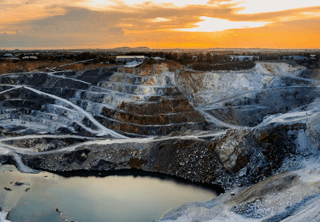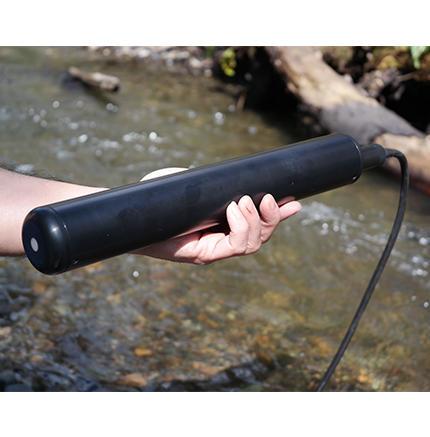The first low-cost
acoustic backscatter sensor designed specifically for measuring
Suspended Sediment Concentration at a point. This is a new type of
sediment sensor, superior to turbidity or optical backscatter sensors
(OBS) for 4 reasons. See Related Articles in right column.
- The 8MHz acoustic sensor ‘sees’ all size grains, and unlike OBS, it sees coarse grains very well.
- The LISST-ABS calibration is far less sensitive to grain size
changes than OBS sensors, changing only ~ ± 30% over 30-400 microns (see
Application Note).
- Operates over a >4-decade working range in concentration!
- Tolerates fouling.
The LISST-ABS is easy to integrate into existing sensor platforms. Click here for simple version of how it works, or here to get a detailed explanation. For turbine abrasion protection, click here.
Features
- Output: Backscatter signal strength in decibels as volts or digital value (formula provided for conversion to concentration)
- Sample Volume Location: 5.5 cm from sensor face.
- Operating Frequency: 8MHz
- Tolerant to biofouling
- Calibration over 30-400 micron sizes: flat to within ±30%; [compare with ±400% for optical turbidity sensors]
- Calibration for fine particles below 30 microns: response follows d^1.5
- Analog, SDI-12 and Digital (RS232) outputs available on the underwater connector
The LISST-ABS is a single-point monitoring sensor. It
uses a new and novel technique to internally compensate for geometric
beam spreading and attenuation, yielding de-attenuated backscatter
signal strength. It is held pointing into flow for low drag.

See more environmental monitoring tools here.

 Hoskin Environmental
Hoskin Environmental
 Hoskin Geotechnical
Hoskin Geotechnical
 Hoskin Instrumentation
Hoskin Instrumentation


 Contact us for details
Contact us for details



